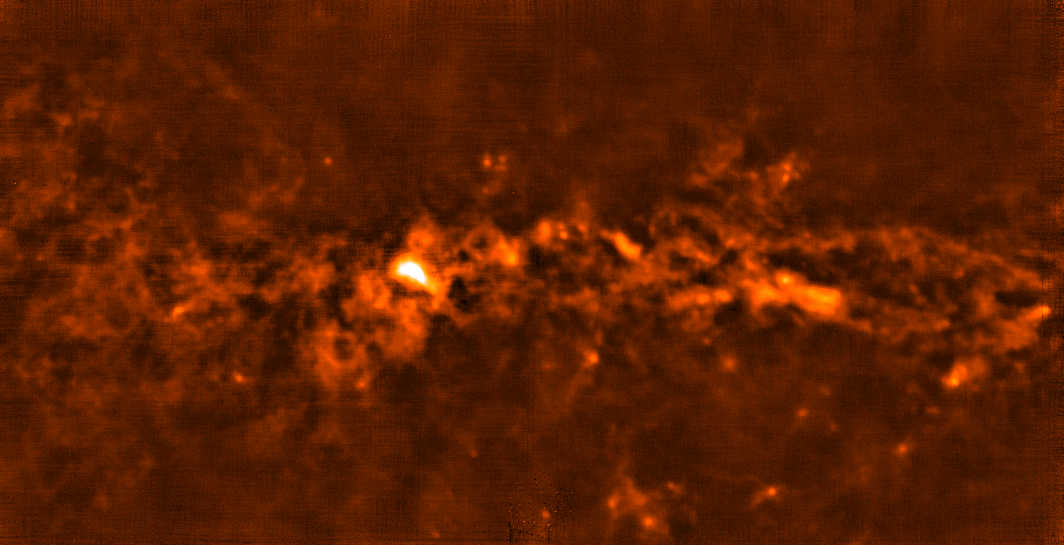
 Exploring the Galactic Plane of Our Milky Way Galaxy with Bolocam
Exploring the Galactic Plane of Our Milky Way Galaxy with Bolocam 
Bolocam
is a CSO bolometer
camera operating at short millimeter wavelengths. Bolocam has an
8 arcminutes field of view with 115 pixels at one millimeter
wave. Taking advantage of the large field of view, a group
of astronomers led by Professor John Bally at the
University of Colorado is conducting a big galactic plane survey of our
Milky Way Galaxy.
The image below shows a 2 by 1 degree field observed with
Bolocam at a wavelength of 1.1 mm. The field of view
is centered at Galactic longitude l = 0.5 degrees, latitude b=0 degree
and contains
the Sgr A complex on the right (the brightest source on the right half
of the image). At the time of the observation, the central black
hole was unusually bright (about 7 Jy) and dominates the 1.1 mm
emission from Sgr A. The brightest source in the field, located
in the left half of the image, is the giant Sgr B2 star forming
complex, perhaps the most virulent region of massive star birth in our
Galaxy. Note the intricate network of filaments that
interconnect the dense cores throughout the Galactic Center. The
Bolocam observations reveal the component of the interstellar medium
most intimately associated with current star formation, especially
massive star formation.
To date, our on-going Bolocam Galactic Plane Survey (BGPS) of
the northern Galactic Plane has observed over 100 square degrees of the
sky and has identified over 5,000 dense cloud cores. We expect to
have a montage of spectacular images of the inner Galaxy a
wavelength of 1.1 mm in the near future.

Figure 1. Radio (1
millimeter wave) image covering two by one degree field, observed with
Bolocam. (Courtesy of Dr. John Bally and the Bolocam Galactic
Plane Survey Team.)
Go back to A Digest of Recent News and
Scientific Results at the Caltech Submillimeter Observatory

 Exploring the Galactic Plane of Our Milky Way Galaxy with Bolocam
Exploring the Galactic Plane of Our Milky Way Galaxy with Bolocam 

 Exploring the Galactic Plane of Our Milky Way Galaxy with Bolocam
Exploring the Galactic Plane of Our Milky Way Galaxy with Bolocam 
